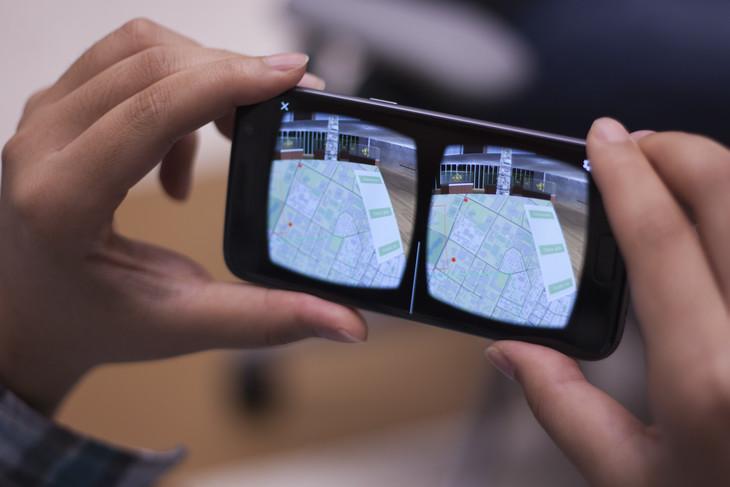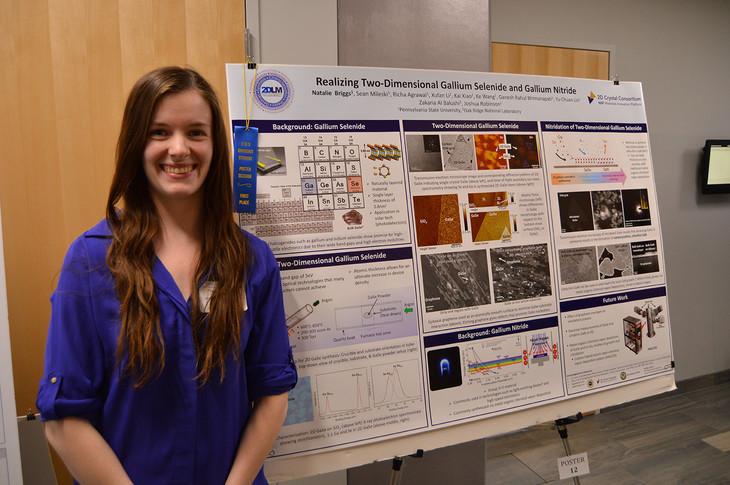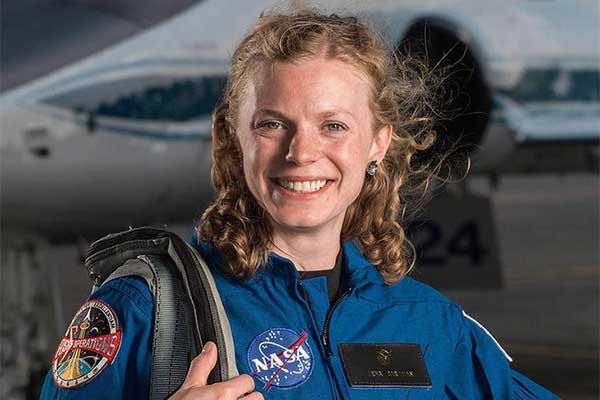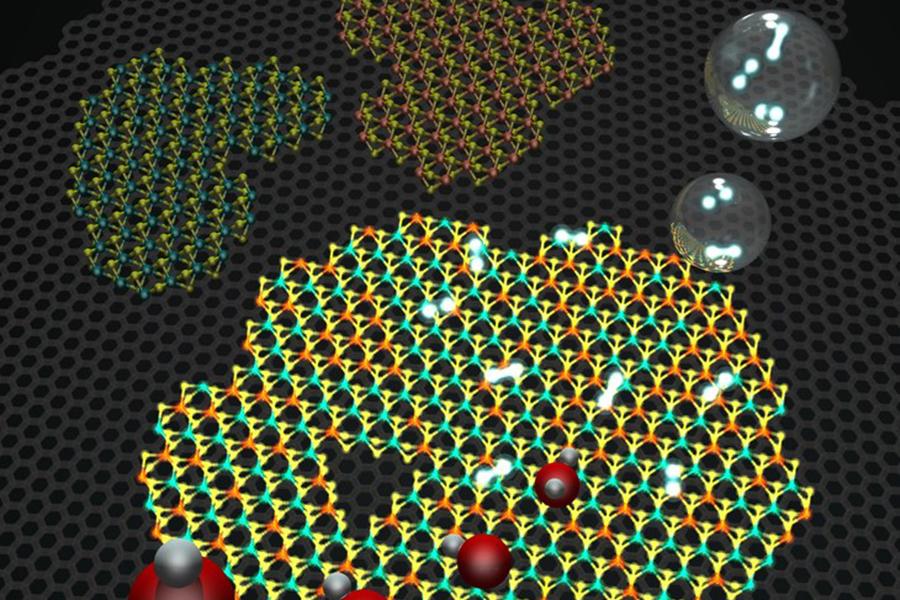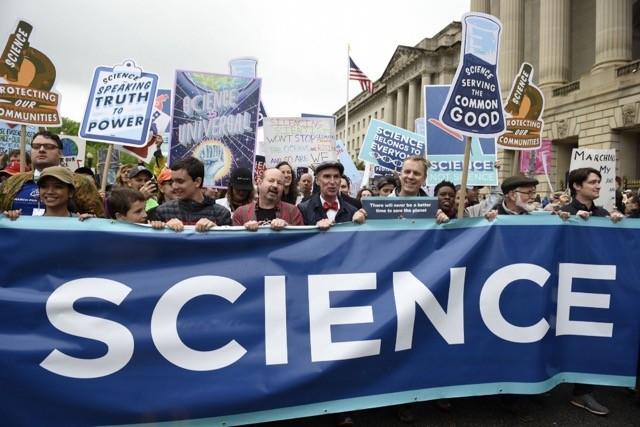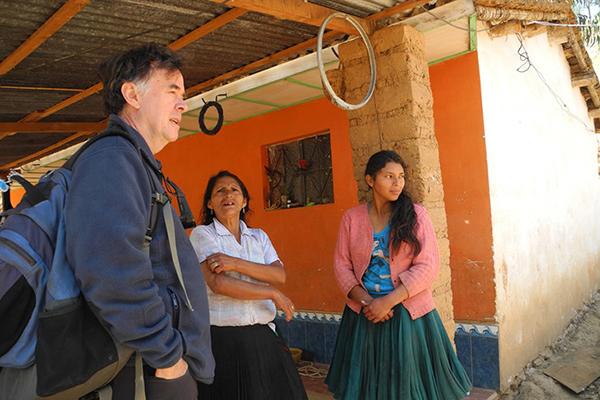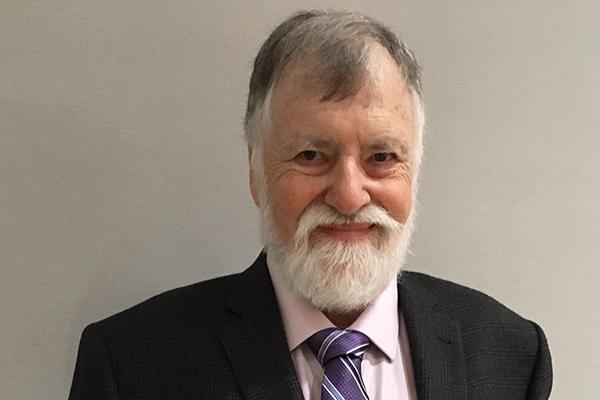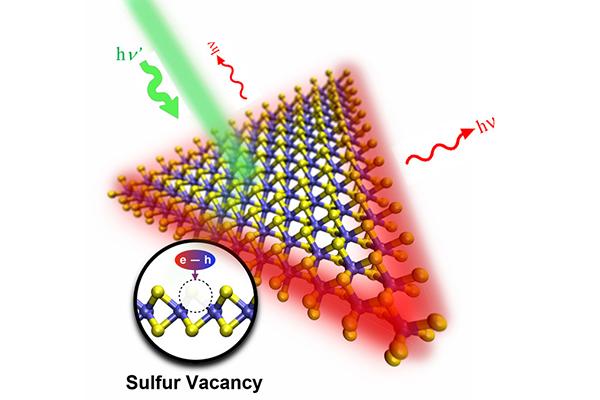Read the latest news about research conducted by investigators in the College of Earth and Mineral Sciences. Our faculty and students are continually advancing technology, creating solutions and expanding knowledge with new and innovative research.
News
Finding practical hydrogen storage technologies for vehicles powered by fuel cells is the focus of a $682,000 grant from the U.S. Department of Energy, awarded to Mike Chung, professor of materials science and engineering, Penn State.
A Penn State research group in the Department of Geography developed a mobile app that offers an immersive virtual tour of class gifts and public art across University Park.
Graduate students Natalie Briggs, Joshua Woda and Nathan Smith received top recognition during the College of Earth and Mineral Sciences’ Graduate Student Poster Competition on April 12 at Steidle Building on the University Park campus.
Zena Cardman, a doctoral student in Penn State’s College of Earth and Mineral Sciences, was named a member of NASA’s 2017 class of astronauts on June 7. Vice President Mike Pence joined NASA officials in introducing the 12 men and women during a ceremony at the Johnson Space Center in Houston.
The "clean-energy economy" always seems a few steps away but never quite here. Fossil fuels still power transportation, heating and cooling, and manufacturing, but a team of scientists from Penn State and Florida State University have come one step closer to inexpensive, clean hydrogen fuel with a lower cost and industrially scalable catalyst that produces pure hydrogen through a low-energy water-splitting process.
Several faculty and students within the Harold and Inge Marcus Department of Industrial and Manufacturing Engineering were honored for excellence at the Industrial and Systems Engineering Research Conference in Pittsburgh.
More than 130 members of the Penn State and State College communities traveled to Washington, D.C., last month to take part in the March for Science, a nonpartisan event organized to rally support for science.
In a commentary in the April issue of Nature Plants, Karl Zimmerer, professor of geography, argues that a comprehensive approach to protecting the human use of biodiversity of agricultural crops is vital to a sustainable food future that addresses global hunger, increasing populations and changing climate.
A paper coauthored by Russell Graham, director of Penn State's College of Earth and Mineral Sciences’ Museum & Art Gallery and professor of geosciences, received the Cozzarelli Prize from the Proceedings of the National Academy of Sciences (PNAS). Each year, PNAS gives the award to the best published paper of outstanding scientific excellence and originality in the six broadly defined scientific areas of the National Academy of Sciences.
Thinning a material down to a single-atom thickness can dramatically change that material's physical properties. For example, graphene, the best-known 2D material, has unparalleled strength and electrical conductivity, unlike its bulk form, graphite. Researchers have begun to study hundreds of other 2D materials for the purposes of electronics, sensing, early cancer diagnosis, water desalination and a host of other applications. Now, a team of Penn State researchers in the Department of Physics and the Center for Two-Dimensional and Layered Materials (2DLM) has developed a fast, nondestructive optical method for analyzing defects in 2D materials.




